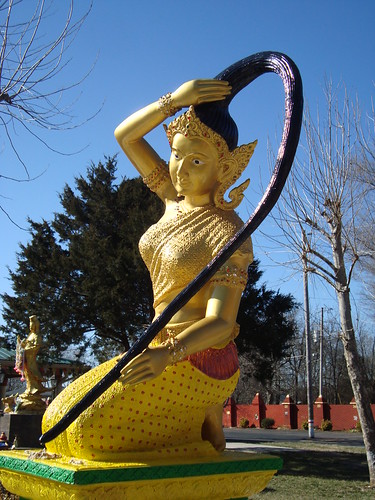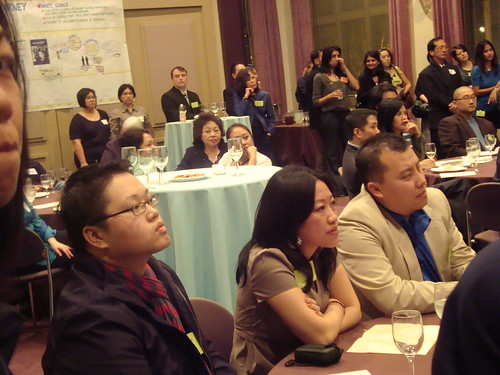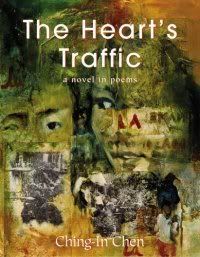
In Minnesota, one of the famous artists of the Laotian community is Bounxou Chanthraphone, who has the distinction of being an NEA National Heritage Fellow and a recipient of the prestigious Bush Artist Fellowship.
She was born in 1947 in the town of Savannakhet, in central Laos. She learned Lao weaving techniques from her mother and grandmother, and soon studied more formally, learning the weaving techniques and designs of her native central region and of the northern and southern regions. She also learned the detailed ikot tie dying technique. Bounxou Chantrhaphone's expertise allows her to weave single strands of linen, cotton, silk, and other materials into the traditional patterns, including the intricate symbols and geometric designs. She uses pigments derived from natural substances including berries, roots, and tree bark. Chantrhaphone uses these skills to weave traditional Lao skirts, dancing costumes, wall hangings and other textiles.
Chanthraphone came to the US in 1982 with her daughter, Ladda. As a child, she attended Savannah Elementary School and continued the study of weaving while she was training as a teacher in the city of Vientiane, Laos. In the 1960s she became an elementary teacher, and went back to the city of Savannakhet and taught in Immaculee School for eight years. Ultimately, in 1975 with the end of the war, she and her family fled and spent time in the Ubon refugee camp in Thailand. In Thailand, she was able to support her family through her weaving. In the US she continued to teach her skills formally to many through programs with the Lao PTA and CAPI, the Center for Asian and Pacific Islanders.
She is deeply interested in teaching others her skills. Lao weaving arts have three levels. Each level has many techniques of learning and teaching. She shares her work to prepare young women to carry on this tradition, to support elder folk artists and will teach everybody who wants to learn.










